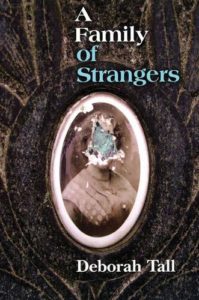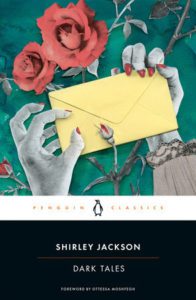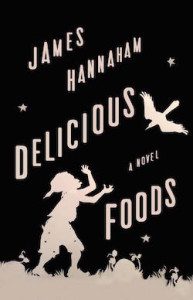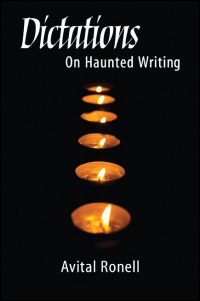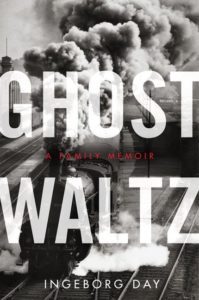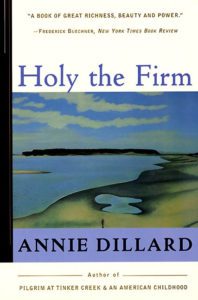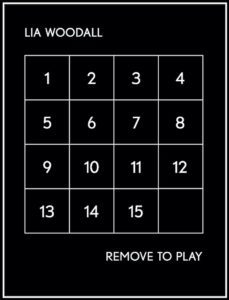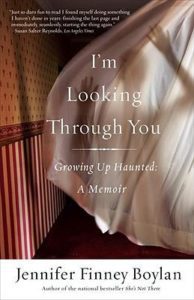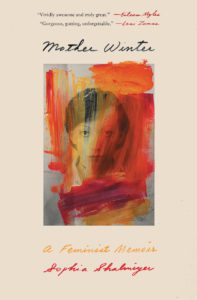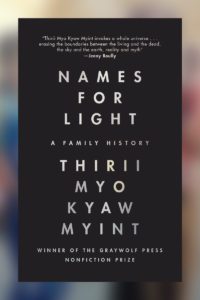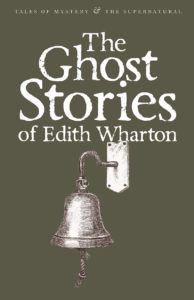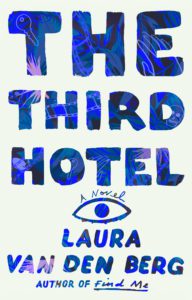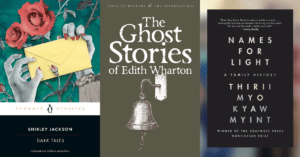
How does one describe a haunting? Even the definition itself is illusory: One dictionary includes the word as “sad or beautiful in a way that is difficult to forget,” another as “frequenting a place,” and yet another as “having qualities that linger, a deeply disquieting or disturbing effect.” I agree with Randon Billings Noble in Be With Me Always, when she writes, “None of these captures the contrary nature of hauntedness—to be filled with hollowness, to ache for something not entirely wanted, to have and have not.”
Ghost stories nearly always center around some kind of “unfinished business,” but not every ghost story involves a haunting. Ghosts spook; hauntings linger. If you were to ask me a few years ago if ghosts and hauntings were limited to the realm of fiction I might have agreed, but after my own literary dive into nonfiction ghost hunting, I can assure you they’re everywhere.
Like ghosts, hauntings show up in literature in all kinds of shape-shifting ways: there are the horrors of wars, genocides, unexplained traces left by lost loved ones, secrets held, violence of nature, trauma, grief—anything and everything that simply won’t go away. Why do I love haunted reads? Because the state of being haunted is a beautiful, terrifying reminder that our own ghosts are here for us, ready to help us decode our hauntings’ hidden messages—if we dare.
***
A Family of Strangers by Deborah Tall
Weaving broken fragments of memory, information, and family history, Tall explores the genealogical tissue of what’s missing. Written in a series of lyrical vignettes, Tall’s prose is spare and arresting, detailing her closed-off childhood in 1950s Levittown where her family wears a “wall of secrecy,” around her extended forgotten family and her father works on radar for the Early Ballistic Missile System. She writes, “The fenced-in acreage of the unsaid kept growing… In this way, a haunted house resided invisibly within our oh-so-normal looking home, a dwelling composed of deletions.” Twelve years in the making, Tall’s book sifts through documents, immigration records, and death certificates, slowly putting together the pieces of what she calls a “partial skeleton,” only for the narrator to find herself ultimately surrounded by tombstones.
Beauty Is a Wound by Eka Kurniawan
If Toni Morrison’s Beloved were recast in Indonesia and told as surrealist satire, you might find Beauty Is a Wound, which takes colonialism, Japanese occupation, Islamic rebellions, and the rise and fall of Communism, infuses them with ghosts and myth, and turns the lot into an epic allegory. The book opens with the character Dewi Ayu, who rises from her grave after twenty-one years to complain “to no once in particular, that people were evil to have buried her alive.” Kurniawan, a rising literary star and screenwriter in Indonesia, whose influences include Melville and Gogol, once told a mentor that Beauty Is a Wound was born out of three earlier novels, which makes sense, given the vast scope of time, violence, and injustice. It’s almost as if the wide cast of curiously depraved yet pragmatic characters know that while they may have survived the worst, even worse may still come. In one scene, a father says to his wife in regard to their missing daughter, “I don’t see any reason that she should die… If she gets too hungry she can eat the baby,” only to realize, a few pages later, after finding her dead body and launching an investigation that “the entire city is responsible for her death.”
Dark Tales by Shirley Jackson
While Jackson’s The Haunting of Hill House (and her best-known short story, “The Lottery”) tend to show up this time of year on lists such as these as predictably as candy corn and pumpkin displays, I’m inviting you instead to delve into her recently-published short story collection, Dark Tales, in which, as Ottessa Moshfegh describes in her introduction, “the everyday world becomes tinted with an odd sheen of terror.” My two favorites play with illusions and the darkest aspects of the mundane. In “Louisa, Please Come Home,” Louisa runs away from her self-absorbed wealthy family. All she has to do to become invisible and begin a new life of freedom is change her raincoat. Meanwhile, her parents keep up the charade of media calls and rewards for her return. But by the end it’s clear they don’t want her back at all, but instead to cling to the illusion that she’s gone. Similarly, an older couple in “The Summer People,” boldly decide to stay in their lake cottage past Labor Day, only to discover that the weather and the locals abide by different rules: Their cozy cottage has suddenly become a coffin.
Delicious Foods by James Hannaham
Wrestling with dark themes such as trauma, modern-day slavery, and survival, Delicious Foods asks us to connect the dots between addiction and the missing. Darlene, a widow unable to cope with her grief after the violent death of her activist husband, turns to drugs and prostitution and one day disappears. Her panicked eleven-year-old son, Eddie, embarks on a quest to find his mother, not knowing that a shady company called Delicious Foods has essentially kidnapped her. Darlene and other captives must pay off debts through hard labor, which includes the steady diet of crack cocaine from overseers to keep workers muddled and disoriented. We also know from the opening scene that Eddie’s hands have been amputated. If this alone isn’t enough to keep you up at night, know that Hannaham has imaginatively employed three perspectives: Eddie, Darlene, and Scotty—the insidious, raunchy and often hilarious voice of Darlene’s addiction. There’s no shortage of haunt-worthy material here, but the aspect that stays with me is what Scotty-the-Drug tells Darlene about the illusive aspects of the body: “…the whole problem of humanity is that if you got a body, you gotta have a time and a place. But when y’all got a time and a place, y’all really don’t got shit—time don’t do nothing but disappear.” Now put this in context with the dismissive comment from a cop to Eddie earlier: “Sometimes folks can’t cope, he kept explaining, and they run away from their lives on purpose because they think that their problems will go away if they take their bodies off the scene.”
Dictations: On Haunted Writing by Avital Ronell
I can’t remember exactly how I found Dictations—it was likely through my own search for haunted writings, but this title, for me at least, was one of the most surprising, for its academic and philosophical approach. Ronell, a Goethe scholar, looks at his body of work in relation to Western literature and philosophy and discovers that Johannes Peter Eckermann, who served as Goethe’s secretary late in life and later published Conversations with Goethe many years after the writer’s death, has functioned as a “transistorized ventriloquy system, housing a resident phantom or alien body for which he himself doubled in Goethe’s oeuvre.” It’s a bold claim—can the dead indeed dictate for the living? And yet, through detailed research and compelling extensive argument, Ronell makes her case that there is indeed a very real through line from the ghostly telepathic presence of Goethe to Eckermann to Nietzsche to Freud and beyond.
Ghost Waltz: A Family Memoir by Ingeborg Day
Haunting: Ghost Waltz tells the story of Day’s trajectory from post-war Austria to the United States, where she first learns of the true horrors of the Holocaust and the realization that her father was a Nazi. More haunting: Day returns to the US, marries an American, divorces him after her second child is born, and her father vows to never speak to her again, even after her youngest son dies at age seven. Day’s parents soon die within months of each other. Perhaps most haunting of all, as detailed by Sarah Weinman in this 2012 New Yorker article, Day’s confessional and seemingly honest narrative contains a few flaws. Day is also the author of the memoir Nine and a Half Weeks, which she published under a pseudonym while working for Ms. magazine. As Day attempts to make sense of her past through sharp prose, her mind cannot get past the anti-Semitism she’s inherited, a poison that she seeks expunge through intellect and reason, but it is soon clear to the reader that demons from her unresolved past have possessed her. Day died by suicide in 2011. For these reasons, and many, many more, Ghost Waltz is a confounding, riveting and difficult read.
Holy the Firm by Annie Dillard
I’ve always loved Annie Dillard for her ability to point readers toward the unseen while also asking us to linger and acutely observe the mysteries of nature. In Holy the Firm, Dillard takes up residence in a one-room cabin on an island in the coastal waters of Washington State, a scene which seems both eerily immediate and worlds away (I viscerally relate to this, as a longtime Washington resident who views our ferry system as akin to Charon the ferryman who transports the dead to the underworld). A moth dies violently in a candle and keeps burning after its death, now a vessel for something else, vivid, crackling, and very much alive. There is a spider in the bathroom who wears “a little outfit” which reminds Dillard of “a certain moth I helped to kill.” A seven-year-old girl named Julie Norwich, who Dillard says she “saw only once, under an English hawthorn tree, at the farm” goes down in a plane crash and her face is burned off. In this three-act tale, ghosts appear as often as angels, like the stone shore where Dillard says real people float. Even the meaning behind the title is spooky: “Holy the firm” as Dillard explains, is a hidden substance, “underneath salts,” “matter at its dullest,” and yet in touch with the absolute. But here’s the thing: Dillard published Holy the Firm in 1977, well before lines were firmly drawn in the sand between fiction and nonfiction. There was no documented plane crash. Dillard is referring to the spirit of Julian Norwich, a visionary and mystic from the Middle Ages she must have communed with at some point on Lummi Island, a site rich with Native American history and heritage. And now, with Dillard off doing her own thing (her website says she can no longer travel, meet with strangers, or sign books) she has become her own kind of ghost. To that, I imagine, she says, You’re welcome.
Remove to Play by Lia Woodall
Suicide as a subject for nonfiction writers is inherently fraught, due to questions which never seem to yield a satisfying answer—I’ve struggled to write much about my own father’s suicide for this reason—but Wooddall, in the tradition of authors such as Joan Wickersham (The Suicide Index) and Karen Green (Bough Down) invents a new form that is as enchanting as it is haunting. Using direct address and a single photographic image her twin brother took of Woodall in front of a mirror before he died, she interrogates him through a nonlinear visual and literary puzzle through the years, filled with snapshots of memory and intrigue which zoom in and out of perspective. A slim, innovative book just under sixty pages, Remove to Play is published by Cupboard Pamphlet, a literary quarterly that doesn’t hew to convention. “I’ve done it. Slid us back together. Put the haunting on hiatus,” writes Woodall. “For however briefly. This essay emerging in the movement. Pieces into wholeness. Form, a distraction that opens.”
I’m Looking Through You: Growing Up Haunted: A Memoir by Jennifer Finney Boylan
From the author of She’s Not There: A Life in Two Genders (which itself is its own kind of ghost tale in how Boylan plays with phantom identities) this book takes the idea of being haunted by the self Boylan couldn’t attain in her youth, and tells the story of her childhood living in Coffin House—a literal haunted house in Pennsylvania. She uses this time period as a metaphor for what is unseen and unexamined as she navigates the trajectory of her true identity. One of the wonders of nonfiction is that authors can confront their ghosts directly, which Boylan does here with beauty and humor: “Back then I knew very little for certain about whatever it was that afflicted me, but I did know this much: that in order to survive, I’d have to become something like a ghost myself, and keep the nature of my true self hidden. And so I haunted that young body of mine just as the spirits haunted the Coffin House, as a hopeful, wraithlike presence otherwise invisible to the naked eye—like helium, or J.D. Salinger, or the G-spot.” What’s so delicious for the reader—and what makes for a great haunting—is that we already know the flash-forward story from Boylan’s other writings. But here, she lingers in the past, allowing us to see the world through her eyes at the time, obscured by cultural mores, and then holds us in suspension as the narrative continues. Later, she writes, “Men like it when a woman can be one of the guys. Except, of course, when she actually used to be one.”
Mother Winter by Sophia Shalmiyev
Shalmiyev’s prose is luminous, rich with metaphor and description. “Russian sentences begin backward,” she begins. Told in a series of lyrical vignettes, Shalmiyev sets up each chapter with a different haunting—the phantom mother who failed in any basic way to meet her expectations, Shalmiyev’s own pregnancy losses, Russian history and superstitions—and expertly weaves them together so the apparitions congregate around common themes of grief, illness, heritage, and shame, all which shimmer and float between the margins.
Names for Light: A Family History by Thirii Myo Kyaw Myint
Winner of the 2021 Graywolf Nonfiction Prize, Names for Light tells the story of ghost memories and ancestral tales passed down, inherited into the DNA of the living. Myint has no living memory of her great grandfather, and yet she is told that she embodies his reincarnation. Whereas Western writers of literary nonfiction will often avoid mention of rebirth lest they get cast into woo-woo publishing silos, Myint writes that her middle sister was once her great-grandmother, also her wife in a past life. There are mentions of cursed houses as well as ghosts and angels, that Myint’s mother describes as “beings who were not to see.” Myint then tells us, “She did not say they could not be seen because she herself saw them sometimes.”
The Ghost Stories of Edith Wharton by Edith Wharton
While I’m no Edith Wharton scholar, I’ve read enough of her work to know that she was both a prolific writer, as well as the first woman to win the Pulitzer Prize in literature. She was also a close friend of Henry James, a well-known author of ghost stories. Wharton’s biographers cite how she described the “dead weight” of her marriage, which leads me to believe that her writings, most especially The Ghost Stories of Edith Wharton, published posthumously, can be seen as the condition of women within her social class during her time, which is to say, repressed and entrapped. As Hermione Lee describes in the biography, Edith Wharton, her ghost stories can be seen as “stories of old age, returnings, and of long-brewed revenges … The idea of an atrophied remnant, a life withering away inside its fixed conventions, haunts her terribly.” Take a look at “The Eyes,” where Wharton writes, “I don’t know how else to describe the fact that they seemed to belong to a man who had done a lot of harm in his life, but had always kept just inside the danger lines,” or “All Souls,” where the narrator says, “I read the other day in a book by a fashionable essayist that ghosts went out when the electric light came in. What nonsense!”
The Third Hotel by Laura van den Berg
The role of grief plays a trickster in The Third Hotel, where Clare, widowed, keeps seeing her her late husband, a horror film scholar, in Havana. I had a visceral reaction to this narrative, as a widow who has often seen her own dead husband out and about hobnobbing at conferences, if only in flickers of images and my dreams. Van den Berg is a master at rendering the mirage; just when you think you can “solve” this ghost story, the narrative shifts. Was their marriage even real? Who was this guy? Who is the ghost? With the distinctions between reality and fantasy blurred almost to the point of dissolution, truths about their relationship are revealed. The Third Hotel left me unmoored, not wishing to dig deeper into the holes left by my own losses, fearing what I might find, yet knowing there was more to be discovered nonetheless. And then, once I worked up the courage to look beyond my ghosts, I was absolutely horrified.
Where the Dead Sit Talking by Brandon Hobson
When a fifteen-year-old Cherokee boy named Sequoyah is placed in foster care after his mother is sent to jail, he befriends Rosemary, who shows him the depths of his loss. As foster kids, both Sequoyah and Rosemary exist almost like phantoms in relation to the mainstream world. Hobson’s prose is vivid, rich with imagery painted with darkness and smoke. “I wanted others to have trouble recognizing who I was and what I desired. This was the way a person should live, in obscurity, unrecognized. I thought of my physical body, the burn marks on my face, my long hair, my Cherokee blood,” Sequoyah says, and here I find myself asking, even after I’ve told myself I’ve already done the deep work of excavating my own hauntings, I look toward the stolen Pacific Northwest landscape where I sit, wondering just how many bones exist under the surface, waiting for me to cast my eyes in their direction, if only for a moment, where they can be fully seen.

